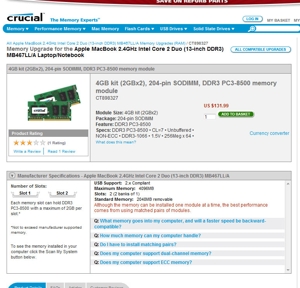Not all web traffic is equal and understanding the value of direct traffic can help online retailers hone their marketing.
“Direct traffic” is web traffic you get from people who already know about your website or store. They either click a bookmark to come to your site or type your site’s URL directly into their browser’s address bar. By comparison, “search engine traffic” comes from people that probably don’t know about your site. They were looking for a keyword or phrase and your site just showed up in the results on Google, Yahoo!, or MSN’s Live Search. Finally, “referrer traffic” describes web visitors that follow a web link or online ad to your website.
Direct Traffic Potency
Of these three traffic sources direct traffic is the most powerful. Visitors that arrive at your site directly were looking for you or what you sell. If you sell candles, table clothes, or placemats and someone types your site’s URL directly into their browser, it’s a pretty safe bet that they’re shopping for candles, table clothes, or placemats. Likewise, no one is going to take the trouble to type www.SuperWidgetStoreOnline.com into their browser unless they want to shop for Super Widgets.
Brand and Brand Value
Direct traffic is a measure or indication of your store’s brand value. To understand brand value, you need to remember that brand is that intangible concept that influences a customer’s buying decisions. It’s that thing that motivates some buyers to choose your store over a competitor’s store.
Brand value then is your brand’s monetary worth in terms of premium pricing, preference, or recognition. And direct traffic is a demonstration of your brand’s ability to attract web traffic without the help of a search engine or a pay-per-click ad.

Apple’s Brand Turns Preference and Recognition into Premium Pricing
Here is an example of how brand value works in the world of online retailing. Let’s pretend for a moment that I have an Apple MacBook and I want to add 4 gigabytes (GB) of memory so I can run some high-end video editing software. Instead of going to Google to search, I recognize the Apple brand on my MacBook or from an “Apple versus PC” television ad and go to the Apple website (direct traffic) where I navigate to the store. Apple has what I’m looking for—4GB of DDR3 SDRAM in the form of two 2GB SODIMMs. I can buy my new memory from Apple for $300.
Now let’s pretend that instead of going to the Apple website I run a search for “Apple Memory Upgrade” on Google. I see Crucial.com’s organic results and click to their site. I use Crucial’s search tools to find 4GB of DDR3 SDRAM in the form of two 2GB SODIMMs that will run with my MacBook. At Crucial my new computer memory sells for $131.99—some $168.01 less than on the Apple website.
Now I need to stop you. You’re thinking something like, “that’s not a fair comparison” or “you’re comparing a real Apple product to a generic product.” But that is not the case; Apple does not make DDR3 SDRAM. The module it sells is every bit the same as the module from Crucial’s website.
So in this particular case Apple’s brand value is worth $168.01. If Apple did not have its brand and the direct traffic associated with it, it might not be able to compete seriously with Crucial or dozens of other memory retailers in search engines or shopping comparison sites since it charges so much more for an identical product.

Value Direct Traffic More Highly than Search Engine Traffic
With the Apple example in mind, smart retailers would take pains to track just how much direct traffic they get and measure direct traffic conversions against search engine traffic and referrer traffic conversions. It is also helpful to follow up with customers that do know your URL. Try to learn how they heard about your site, so that you can replicate that sort of marketing and create more direct traffic visitors.
Summing Up With Five Direct Traffic Tips
Too often retailers overlook brand and direct traffic when they plan their marketing campaigns, instead focusing on search engine traffic. But, you should do more to build direct traffic, and here are five things you can do.
1. Follow up after a sale. Great follow up and exceptional customer service can convert a one-time customer, who may have surfed to your site from a search engine, into a “direct traffic,” “brand aware” customer that will go to your site first next time.
2. Establish a newsletter. Develop a content rich newsletter that doesn’t just promote your products but also includes interesting content. As an example, if you sell hiking equipment try including short stories about hiking, say a first person article about a recent trip.
3. Develop a product update RSS feed. Allow site visitors to subscribe to a product update RSS feed that provide them with price and availability information when a product they’re interested in is updated.
4. Offer services or downloads. Keep customers coming back by offering them something other than a sales transaction. For example, an online store featuring school and art supplies might offer free downloadable coloring pages that are branded with the stores logo. Parents and teachers can download the coloring pages for their students or children.
5. Consider buying print advertising. Nothing says brand like print advertising that shows something about your company’s values and products.




